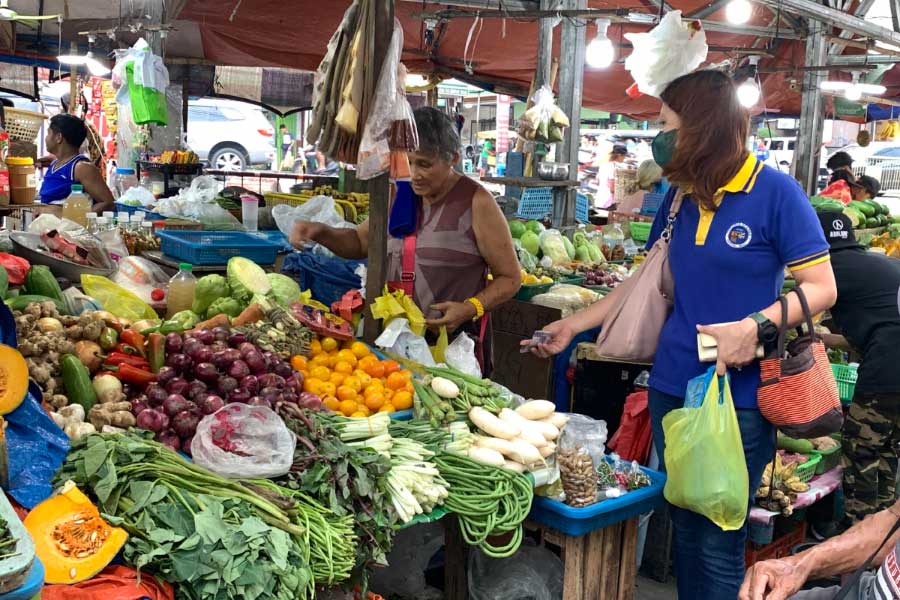
By Mariela Angella Oladive
As Western Visayas grapples with a gradual increase in inflation rates, the Philippine Statistics Authority (PSA) is urging residents to exercise fiscal restraint, particularly with non-essential spending.
In a recent press conference, Nelida Amolar, Chief Statistical Specialist and Officer-In-Charge Regional Director of the Regional Statistical Services Office, underscored the need for prudent financial planning in light of escalating inflation exacerbated by El Niño and shortages in key commodities.
“Given the current crisis we are facing, characterized by the effects of El Niño and shortages in rice and slaughtered land animal production, considering that food constitutes a significant portion of the inflation rate, I urge everyone to tighten their belts when it comes to finances,” Amolar remarked.
“If an expenditure is not essential and does not provide significant nutritional value, it’s advisable to refrain from making such purchases in anticipation of rising inflation.”
Amolar further underscored the need for proactive measures and vigilance in addressing the effects of inflation, as recent data from PSA 6 revealed a steady increase in the region’s inflation rate.
Starting from a modest 2.0 percent in January, inflation climbed to 2.7 percent in February and reached 3.1 percent by March.
“The spike in inflation can be attributed largely to the rapid increase in prices of food and non-alcoholic beverages, which account for a substantial portion of the inflation rate,” explained Amolar.
She identified key indicators such as the rising prices of cereals, meat, and other essential food items, coupled with slower declines in vegetable prices, as significant contributing factors.
The chief highlighted the impact of reduced livestock production on food prices, citing the fundamental economic principle of supply and demand.
Lower production levels translate to diminished supply, driving up prices due to increased demand.
According to agricultural data, livestock production dropped to 33,000 during the third quarter of 2023, down from the 52,000 recorded in 2022.
Additionally, contributing to the latest 3.1 percent inflation rate are increases of 4.8 percent in prices for restaurants and accommodation services, and a 2.4 percent inflation rate in transportation.
On the other hand, the chief noted that despite these increases, the region ranked third lowest among other regions in terms of inflation.
She also pointed out that headline inflation remains comparatively low when viewed year-on-year, indicating an improvement in the purchasing power of the peso compared to the previous year.
The impact of rising inflation was echoed by Francis, a 45-year-old trisikad driver from a lower-income household, who shared his struggles in coping with increased living costs amidst stagnant income levels.
“Managing expenses has become increasingly difficult, especially for someone like me, whose livelihood depends on daily earnings from trisikad driving,” expressed Francis in an interview with Daily Guardian.
He further lamented that there are occasions when his income falls short, making it difficult to cover essential expenses.
“We can only afford cheaper cuts of meat sparingly, and throughout the week, my family and I are forced to carefully consider our options and opt for cheaper goods,” Francis detailed.
Meanwhile, in response to the increasing electricity consumption worsened by the sweltering weather, Chief Amolar further advised:
“As the hot weather leads to higher electricity usage due to our dependence on electric fans and air conditioners, let’s stay vigilant and proactive. When the rainy season returns, let’s ensure we plant trees and other fruit-bearing plants for our family’s sustenance.”























